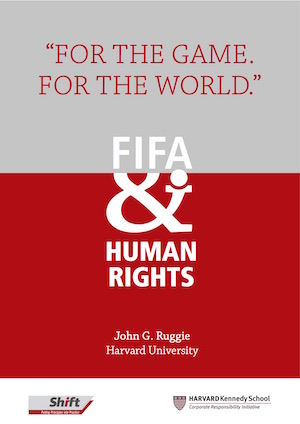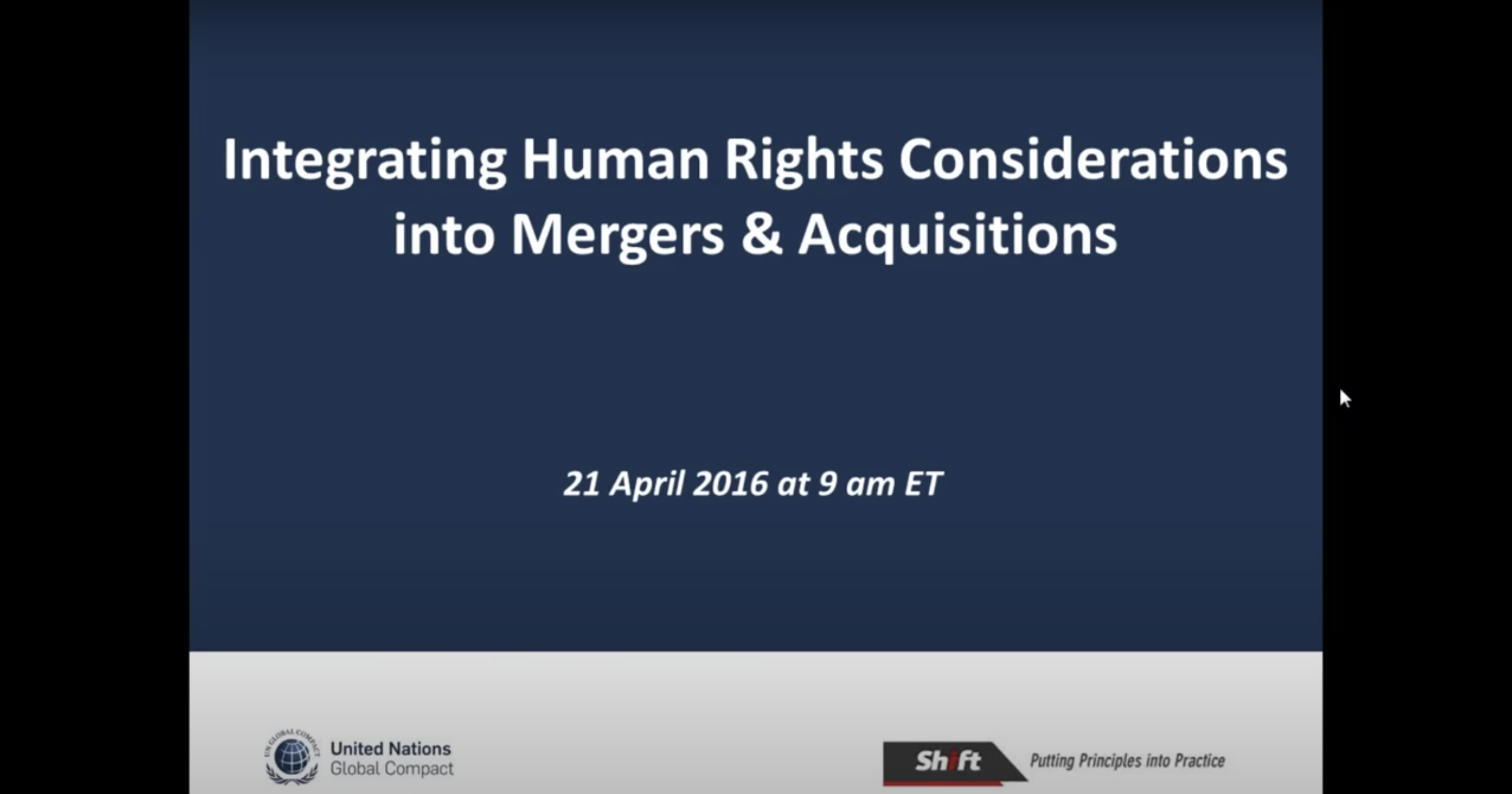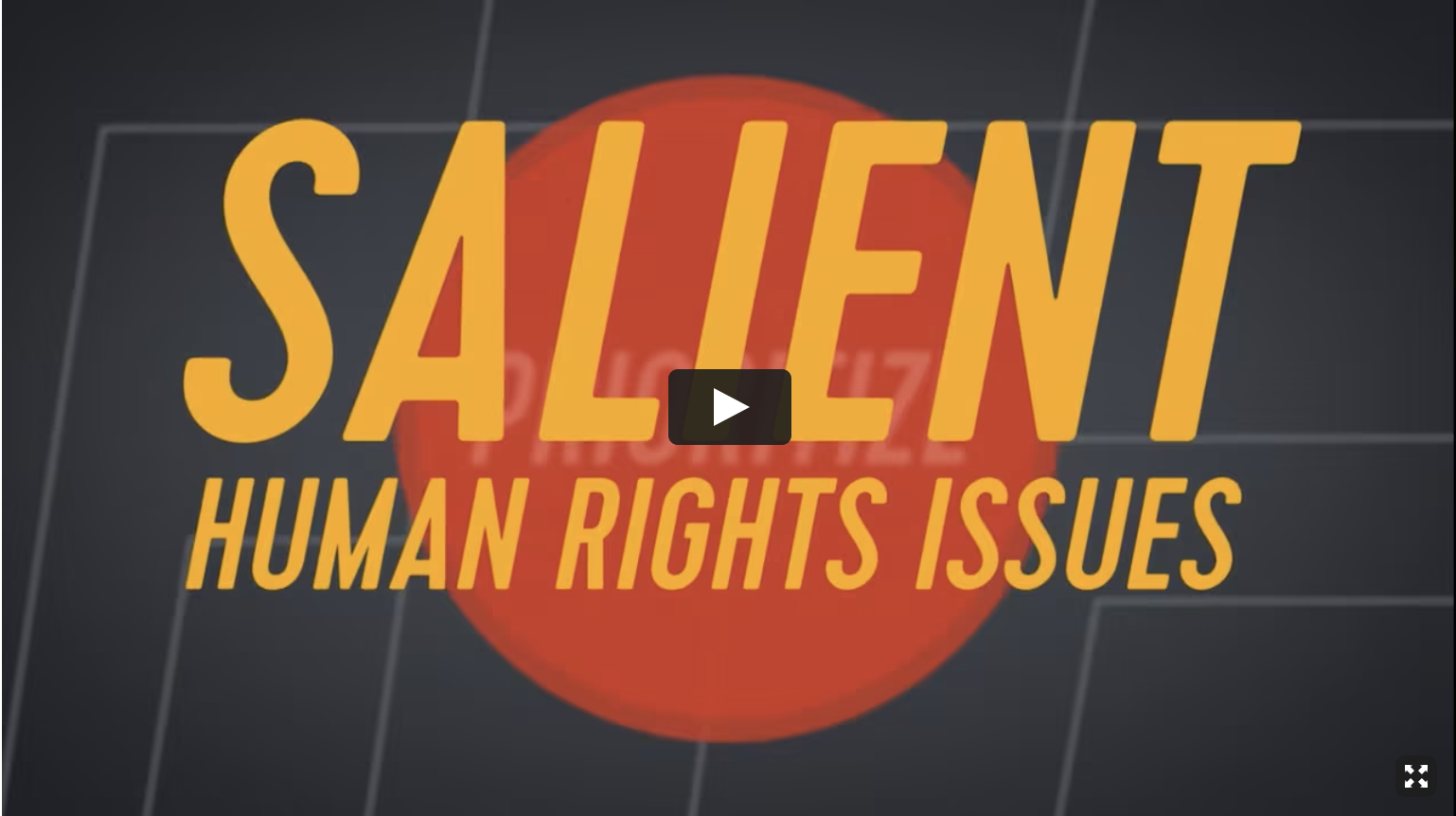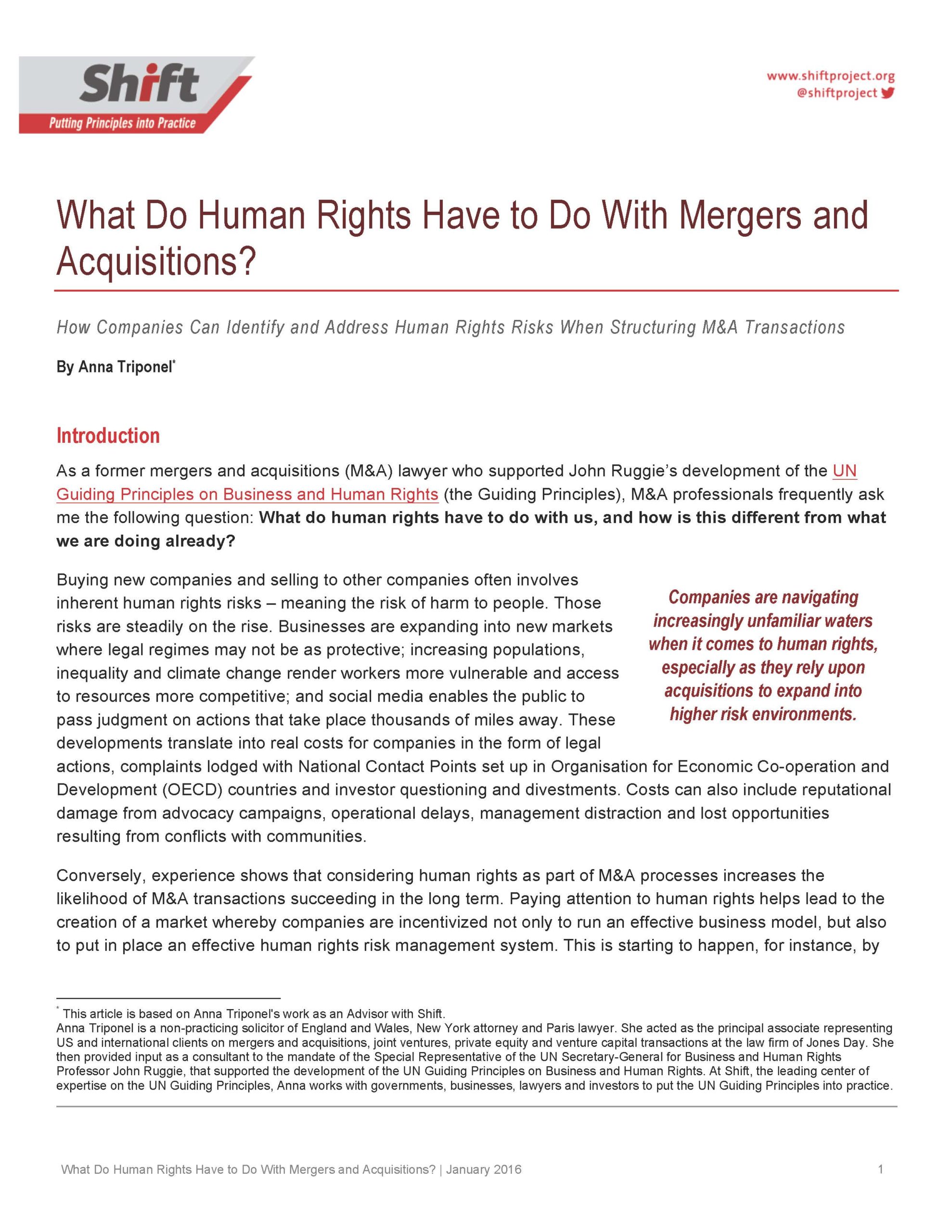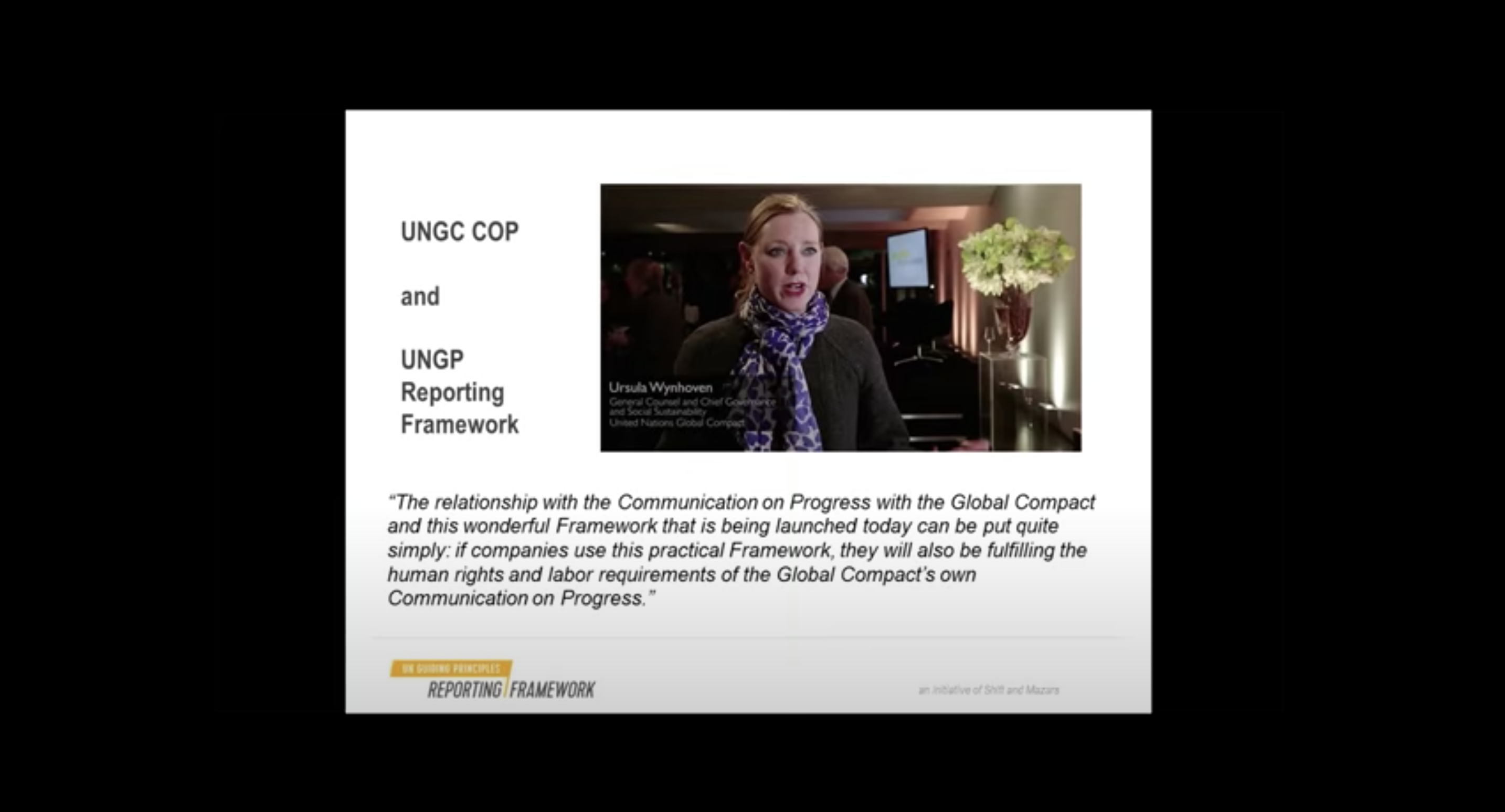Also see: Press release on publication of the report | Collaboration page on this work | Unofficial translation of this report supported by the Business & Human Rights Resource Centre.
Update: In March 2017 Shift Managing Director and Co-Founder Rachel Davis joined the newly established FIFA Human Rights Advisory Board. We see our participation in this Board as a significant opportunity to push for FIFA’s implementation of the report on this page. In Shift’s participation on this Board, we retain complete independence and do not accept any financial or other compensation for our time.
—
Shift supported the development of this report. The summary is excerpted from the resource.
Executive Summary
In December 2015, FIFA asked me to develop recommendations on what it means for FIFA to embed respect for human rights across its global operations. The authoritative standard for doing so is the United Nations Guiding Principles on Business and Human Rights (“UNGPs”), endorsed by the UN in June 2011, of which I was the author. This report first lays out the relevant human rights context for FIFA, and then presents 25 detailed recommendations for action. They fall broadly under three areas of necessary change:
- From Constitution to Culture: FIFA needs to translate its commitment to respect human rights, included in its new Statutes, into its daily actions and decisions. This includes:
- Setting clear expectations for the work of all parts of the administration and equipping and resourcing staff to deliver;
- Ensuring that these efforts are fully reflected in and supported by decision-making on the part of FIFA’s leadership and governing bodies.
- From Reactive to Proactive: FIFA needs stronger internal systems to address the increasingly predictable human rights risks associated with its business. This includes:
- Evaluating the severity of risks to people across both its activities and its relationships;
- Building and using its leverage to address these risks as determinedly as it does to pursue its commercial interests.
- From Insular to Accountable: FIFA needs to provide greater transparency in managing human rights risks and improve access to remedy. This includes:
- Routinely discussing key issues with external stakeholders, including those whose human rights are at risk, and disclosing its efforts and progress in addressing challenges;
- Ensuring that access to remedy for human rights harm associated with FIFA is available not only on paper but also in practice.
Background to This Report
FIFA has been beset by allegations about human rights abuses in connection with its events and relationships. Prominent among them have been reported deaths among migrant construction workers in Qatar, which was awarded the 2022 Men’s World Cup, and the country’s kafala system that often leaves migrant workers in situations of bonded labor. Other tournaments have raised concerns about forced evictions of poor communities to make way for stadiums and other infrastructure, and clamp-downs on freedom of expression among citizens and journalists. There has been less media attention on some other human rights risks, though plenty of concern among those who follow these issues. They include risks to workers’ rights in FIFA’s own supply chains, alleged trafficking of young players, and endemic discrimination against women in the world of association football.
The UNGPs set out the basic policies and processes that enterprises need to implement if they are to know and show they respect human rights in practice. While FIFA is established as an association, it conducts significant commercial activities on a global scale, making the UNGPs the appropriate reference standard.
FIFA and I agreed that I would identify and advise on gaps in its policies and processes, and also author an independent public report with recommendations on how to embed respect for human rights across everything FIFA does. I have retained full editorial control over this report.
What Comes After This Report?
My recommendations are intended to be practical. That does not mean they are all easy. Some recommendations can be acted on immediately; others will take time to implement. Short-term priorities must include addressing human rights risks in tournaments that are already scheduled, and using every opportunity to press host countries to support FIFA’s new statutory human rights commitment. In addition, FIFA should finalize the integration of human rights requirements into the bidding documents for the 2026 Men’s World Cup. Other immediate steps should include developing a human rights policy and implementation strategy, creating the necessary internal operational and accountability structures to drive this work across the organization, and instituting more robust engagement with external stakeholders who have human rights expertise.
I have appreciated the willingness of individuals inside and outside FIFA to speak frankly with me and my team from the non-profit organization Shift. This has been critical in giving us the necessary insights to produce practical analysis and recommendations, notwithstanding the considerable complexity of the issues and institutional networks involved. There are many dedicated professionals in the FIFA administration who grasp the significance of human rights for the organization, and who are committed and motivated to achieving progress. Moreover, there are areas where work is already underway in FIFA towards meeting its human rights objectives. The new political leadership of FIFA and its restructured governing bodies must now empower the staff to take this work forward, provide them with the necessary resources, and lead by example in making respect for human rights part of how FIFA does business. FIFA’s own promise —“For the Game. For the World.”—demands nothing less.
